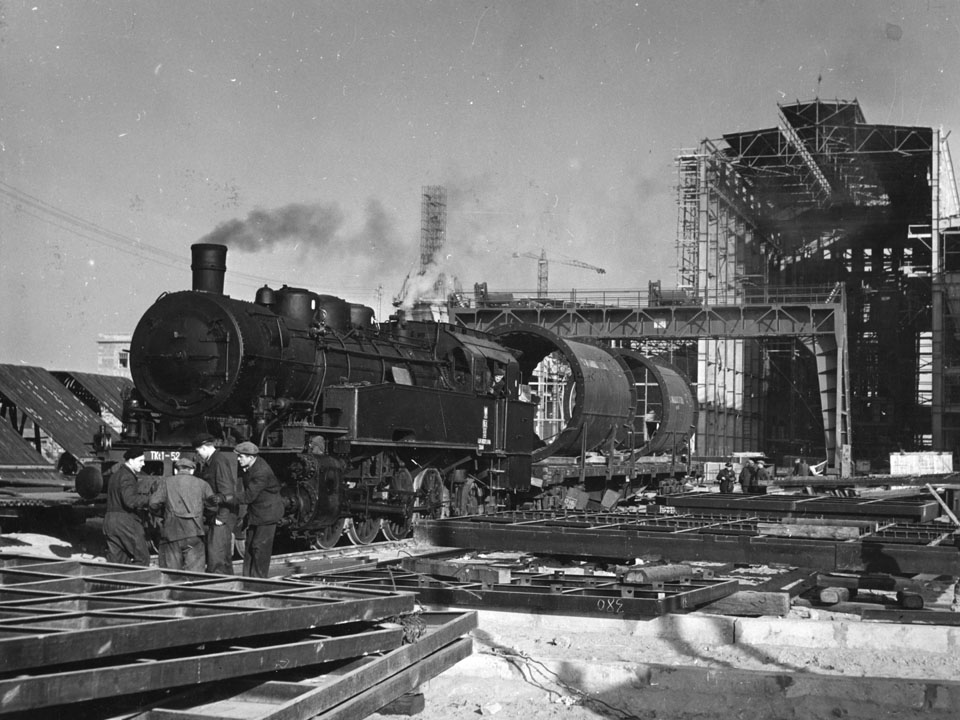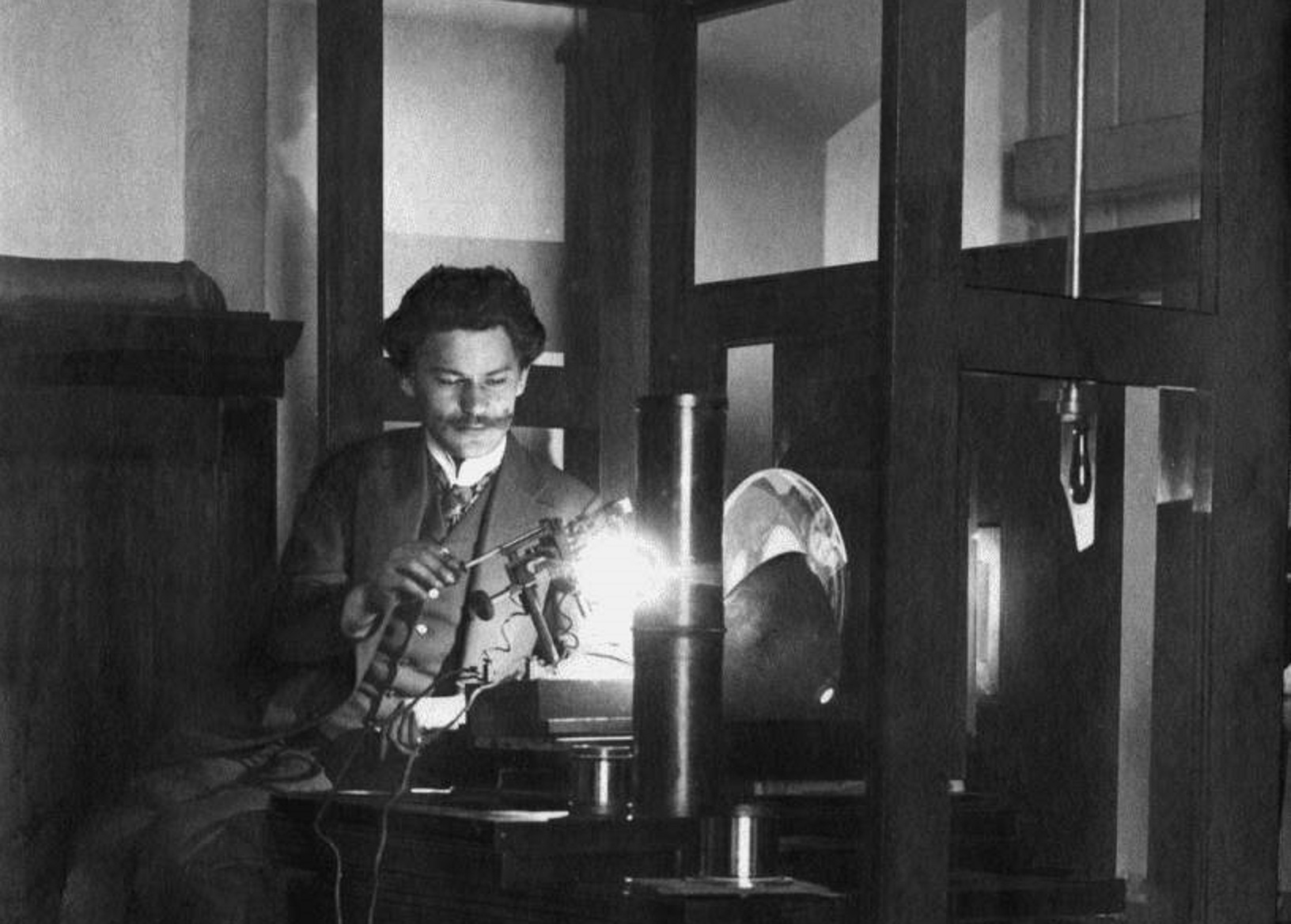The communist modernization that began in Poland after 1945 was focused mainly on three issues: the reconstruction of the social structure, urbanization (both the expansion of old cities and the establishment of new ones), and strenuous, accelerated industrialization. This modernization would bring profound transformations in both the social and cultural spheres. Among the intended goals were the nationalization and mechanization of agriculture, the establishment of a “workers and peasants alliance,” mass migrations from villages to cities, large-scale social advancement, and even the development of new styles of work and life.
by Ewelina Szpak
Modernization understood in this way was implemented in practice without paying attention to the realities of post-war social life, such as shortages of specialists, supply problems, the high level of illiteracy, health problems, post-war social traumas and pathologies. Little importance was also attached to limitations resulting from the natural environment, local water resources or the geophysical limitations of the established strongholds.
Thus, it is hardly surprising that just two decades later, even though modernization was presented by propaganda as a success, a triumph and capable of breaking records (e.g. in the number of steel cast) in most of the most industrialized cities and regions of Poland, an ecological disaster was also declared. It threatened not only the fauna and flora of the surrounding city, human health and life, but also – as judged by the eventual fate of Krakow’s monuments – the heritage of Polish culture.
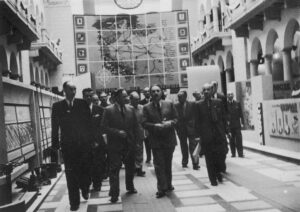
Speeding towards an ecological disaster
Until the end of the 1960s, the problem of environmental threats appeared only sporadically in official public discourse. As the disclosed records from the censorship indicate, it was forbidden to write about the contamination of the environment or the “direct threat to human life and health caused by industry and chemicals” in Poland until the end of the 1970s. It was no different in other countries of the Eastern Bloc, including the USSR. As Douglas R. Weiner states, a decree of the Central Committee of 1957 prohibited the reporting “of forest fires, industrial accidents, military accidents, infant mortality, or radioactive pollution.” The consequences of censorship understood in this way were fully known by the 1990s. According to Oleg Yanitskii, it was in this decade that Goskompriroda, the State Committee for the Protection of the Environment, appointed by Mikhail Gorbachev, recognized about 15% of the territory of the USSR (about 2.5 million sq km.) as an area of environmental disaster, and the conditions in 68 large industrial centers of the USSR as dangerous to health. However, according to the Canadian researcher Joan DeBardeleben, the Stalinist order installed after the Second World War created a much greater burden on the environment than the USSR did in the countries of Central and Eastern Europe, among others, due to the smaller amount of valuable natural resources, smaller reserves of clean waters, denser population, faster industrialization and the use, for energy purposes but extremely harmful to the environment, of highly sulfurized brown coal.
Furthermore, the problem of environmental destruction did not only concern the countries behind the Iron Curtain. In the 1960s and 1970s, Western countries, at least several decades ahead of Central and Eastern European countries in terms of technology development and the pace of production of consumer goods, were also strongly confronted with the ecological costs of modernization. The scale of air, water and soil pollution as well as the degradation of local ecosystems at that time became the subject of concern and public debate in the West.
At the same time, however, it is the capitalist world – not only as presented by the propaganda behind the Iron Curtain, but also in the West – which is the main culprit in environmental degradation. On the basis of a priori assumptions, it was concluded that central management of the economy posed less risk to the natural environment. This image was strongly sustained by Soviet propaganda, with which – due to the lack of data – it was difficult for Western researchers to argue with. Only the data disclosed in the 1980s and 1990s showed how illusory this image was.
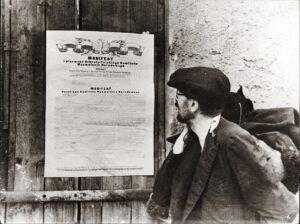
Old and new city
A perfect illustration of the communist environmental policy in Poland is the situation of Krakow and Nowa Huta in its immediate vicinity.
Krakow was a medium-industrialized city in the interwar period. After the Second World War, it found itself, like many other Polish cities, in the grip of numerous industrial plants. Within its borders or on its outskirts, apart from the aforementioned steelworks named after Lenin, were also the Aluminum Smelter in Skawina, the : Sodium Plants “Solvay”, Bonarka Chemical Factory, Polfa (a pharmaceutical factory) and the Heat and Power Plant “Łęg”.
The establishment of a new socialist city (Nowa Huta) on the outskirts of Krakow in which the flagship industrial investment (Lenin Steelworks) was located, was understood for years as a form of “revenge and punishment”. According to this, the communist authorities were punishing the conservative inhabitants of Krakow who, in the January 1947 elections, unambiguously opposed the new order and the authorities. This hypothesis is probably not entirely false. When they undertook planning about where to locate the steelworks and decided on the neighbourhood of Krakow, they also took into consideration such important factors as geography, geology as well as demographic considerations. As Andrzej Chwalba pointed out, for Soviet engineers and architects who decided on the location of the plant, the workforce available in the vicinity of Krakow was also of great importance, as was the easy connection to Nowa Huta from Silesia (the biggest industrialized region of Poland at that time) and to the eastern border of the country, and last, but not least, and necessary for the operation of such a large enterprise – the water resources of the Vistula.
Resistance to the construction of a huge flagship investment of Stalinism, which can be tracked in the press and sources at the time, testifies to both the increasing social tension and the concern for the Krakow ecosystem. A writer and enthusiast of the new order, Adam Polewka, commented on these fears in a rather sarcastic way: “Krakow, or more precisely speaking, its main spirit, which is the bourgeois, wanted to live in a historical reserve. Today they are worried that Nowa Huta will smoke the city and its old, venerable walls”.
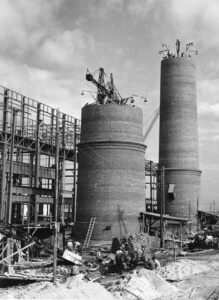
It soon turned out that the location of Lenin Steelworks although it aroused huge social resistance, was not the greatest threat to Krakow, at least in the first years of its operation. It was launched in 1954 in the vicinity of Skawina Aluminium Steelworks, which since the 1960s generated ever greater threats to the life and health of its employees and local residents. As the reports of the Polish Academy of Sciences Team for Toxicology of Fluorine, which were secret by the government, have shown – already in the 1960s, emissions of dust and chemical compounds in some cases exceeded the permitted standards by several dozen times, having a destructive effect on the health of residents and employees. The other factories, which systematically, and in accordance with subsequent plans, increased their production were slightly less toxic.
One of the most frequently used strategies to distract people’s attention from the scale of environmental destruction generated by plants in Krakow and near Krakow was the propaganda of success in which exceeding the production standards was a source of pride and complacency. Designed to produce 1.5 million tons of steel per year, the Lenin Steelworks exceeded this number twice as early as at the end of the 1950s and the beginning of the 1960s, and the ambitions of the engineers and directors managing it were even bigger: in 1977, steel production there reached a record 6.7 million tonnes, which meant almost 5 times exceeding the production standards. Meanwhile, as the research of specialists at that time showed, exceeding the original standard caused significant environmental destruction. The plant used in its operation an open-flow water system, i.e. one in which water taken from the Vistula, after fulfilling its role in production, was discharged back to the river as a sewage: “with the production of 1.5 million tonnes steel each year and the Vistula’s ability to clean itself more than today [this increase in potential] was still technically and economically justified,” wrote W. Bieroń in 1973 in the Krakow magazine “Aura”. However, as the standard was increased, the system became completely ineffective, clearly affecting the water level in the Vistula.
Dying Rivers
The problem of water pollution and depletion did not, of course, only apply to the Krakow section of the Vistula River: it took its toll almost throughout Poland. As research from the 1980s shows, sewage plants did not exist or did not function properly in almost half of all Polish cities with an efficient water supply and sewage system. No wonder that almost 60% of the Vistula sections did not meet any cleanliness standards (40% were in the third lowest class), and smaller rivers, such as the Bug, Ner, or Wełna in the 1980s were classified directly as water-sewage.
In the 1960s, the situation of the second largest Polish river – the Oder – was also terrible. Its pollution was one of the frequent causes of tensions between Poland and Czechoslovakia in the 1950s and 1960s, with both sides interchangeably polluting the watercourse.
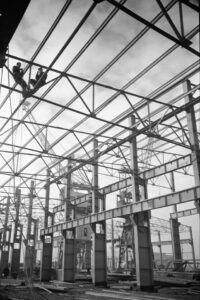
In the 1960s, as shown by the research of F. W Carter and D. Turnock, Czechoslovakia struggled with a huge problem of environmental contamination. It was particularly visible in the regions of lignite extraction, e.g. in the area of Teplice, but also in Prague, where, similarly to Krakow, dust and substances accumulating in the air had a destructive effect on the historic buildings of the city since the 1960s. In the case of Poland and Krakow, the rapidly progressing degradation of the most valuable monuments aroused very strong emotions in the country: “The acidification and sulphation of the environment, on the one hand, and the introduction of fluorine compounds [into the composition of atmospheric air] on the other hand, cause the decomposition of limestone binder” alarmed in his book “SOS for Krakow” Jan Adamczewski. “We live in a transition period – these problems must be solved in the future, otherwise the entire revalorization will not make any sense. Man is tough, monuments are not.” The alarming condition of Krakow’s monuments resulted in social mobilization and the establishment of the Social Committee for the Protection of Krakow’s Monuments. The natural resources located near Krakow were less fortunate – the Ojców National Park or the Niepołomice Forest. This was particularly evident in the 1970s, when, along with the excessive emission of industrial dust in together with the then common “pine mania” (afforestation with pine trees), the forests were significantly dehydrated and their immunity decreased. Gases and dusts emitted by Krakow’s industrial plants “by combining with water (fog, rains) became stinging acids, killing the plant cells and preventing the proper course of life processes in plant organisms”.
Of course, air pollution also affected the health and quality of life of the inhabitants. In letters to the authorities, they complained about “clouds of brown smoke” obscuring the sky or “bare tree skeletons” observed after the “acidic” rains. However, the health consequences of the ecological state of the country were not widely understood. Meanwhile, as shown by the analysis carried out in the 1980s and 1990s, air pollution, especially in the south of Poland, had an indirect impact both on the number of miscarriages and infant mortality as well as on the growing number of respiratory diseases, cancer and autoimmune diseases. A disastrous situation in this respect was also observed in Upper Silesia, where, for example – as shown by morphological and toxicological tests – the lead content in the blood of children was even five times higher than in other European cities.
The condition of air, water and soil was bad throughout Poland, but the Silesian-Krakow Industrial District was the worst in the reports. This area was at the same time an important part of the industrial strategic corridor stretching from southern East Germany, through northern Czechoslovakia, to the border with the USSR, and – as research has shown – was most affected by the problem of air pollution in Central and Eastern Europe.
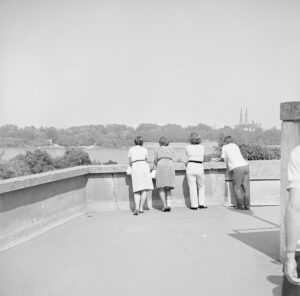
Environmental policy and social attitudes
Although the awareness of the scale of environmental destruction was already present among the society and the authorities in the 1960s, actions to change the systemic approach to environmental policy were not undertaken until the 1970s and, above all, the 1980s. The magazines and reports appearing in the second publishing circulation played a special role in increasing public awareness. In Poland, an important change was brought about by the end of the 1970s and at the beginning of the 1980s, when, as a result of “freeing” ecological issues from censorship (in 1979) and the wave of enthusiasm accompanying the period of the so-called the Solidarity carnival, it was possible not only to establish the first environmental organization in the Eastern bloc countries (the Polish Ecological Committee), but also to publicize a number of abuses, leading, among others, to the closure of one of the most harmful branches of the Skawina Aluminum Works (electrolysis department). The successes of the Polish ecological organization stimulated the environment of ecologists, already active in other countries of the Eastern Bloc, including in Hungary. Already in the 1970s – both in Budapest and in smaller cities, as well as in Dunaújváros, people protested. In the next decade, the deteriorating condition of the environment resulted in further actions (such as protests accompanying the plans to build hazardous waste incineration plants in the vicinity of Dorog) or the establishment of the “Duna Kör” (Danube Circle) – an ecological non-governmental organization, whose subsequent activities were not without impact on the collapse of the system. In Hungary, as in Poland and Czechoslovakia, the neglect of economic policy resulted in pollution not only of the air, but also of rivers and groundwater. In the 1980s, the Tisza, Danube, Shamos, Sajó and Zagyva rivers were the most polluted rivers in Hungary, and the water resources of 773 towns and villages were unfit for drinking.
The attitude of the authorities towards environmental policy in most of the bloc countries was almost identical. In the case of Poland, as Dariusz Jarosz showed in his research, knowledge about the growing ecological threats throughout the country was promoted by the rulers. A specific testimony of this was a number of regulations and laws introduced since the 1960s, aimed at ensuring the protection of the atmospheric air and water. In the 1960s, Warsaw also concluded a number of international agreements aimed at environmental protection (including with Czechoslovakia, the GDR, the USSR).
In domestic politics, the new legislation generally aimed at changes in the management structure of the plants and at the greater prerogatives of environmental departments and offices. It was postulated to cooperate with the scientific community and to develop ambitious projects in this field. In practice, very little changed. And although drastic violations of standards and contamination of the natural environment have been formally penalized since the late 1950s, in practice it did not matter much, even though the penalties imposed on enterprises were sometimes not only extremely high but also quite regular. This was especially true of the mines. In 1967, the disgraceful leader in terms of the amount of penalties and fines imposed for environmental pollution in Poland was the “Dębieńsko” Coal Mine, which was fined over 2.5 million Polish złoty (with an average monthly salary slightly exceeding PLZ 2,000). The scale of the problem from the perspective of the whole country can be shown, however, by the sum of penalties in 1967 in total, amounting to as much as PLN 33 million.
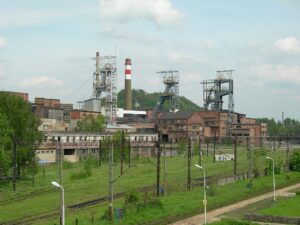
As emphasized by the researchers, the ineffectiveness of actions resulted primarily from an internal systemic contradiction. The priority of quantitative production was clearly against the requirements of environmental protection. This was confirmed by the debates of specialists writing for the industry magazine “Aura”, who in the 1980s saw the causes of the persistent state of “ecological catastrophe” in Poland not so much in the lack of investment funds, but in the lack of clear rules of cooperation and legal standards that would resolve competence disputes and conflicts between individual ministries.
The real changes in environmental policy (entailing high social and economic costs) were brought about only during the transformation period. The liquidation of production departments or entire workplaces (in the heavy and chemical industries) that burdened the environment the most, multi-million-dollar pro-environmental investments and quite extensive environmental education in the 1990s – allowed Poland to gradually recover from the ecological disaster of the 1980s, for which the industry was primarily responsible.
It is worth noting, however, that both in the 1970s and 1980s, the problem of smog and the emission of pollutants generated by the so-called low emitters, i.e. car fumes or domestic coal stoves and fireplaces) has not yet been the subject of detailed measurements and analysis, and the environmental consequences of pollution sources did not appear on a larger scale in the public debate until the late 1990s.
Author: Ewelina Szpak – Assistant Professor at the Tadeusz Manteuffel Institute of History, Polish Academy of Science, where she is currently working on a project entitled ‘A Socio-Cultural History of Cancer in Poland after 1945. Institutions. Places, People’. She studies biopolitics as well as social and cultural history of the Communist period in Poland.
Translation: Mikołaj Sekrecki
Bibliography:
- R. Weiner, Communism and Environment, in: Endgames? Late Communism in Global Perspective, 1968 to the Present, ed. by J. Fürst, S. Pons, M. Selden, Cambridge UP 2017, pp. 529-555.
- Peter J. Hill, Environmental Problems Under Socialism, Cato Journal, Vol. 12, No. 2 (Fall 19).
- David Turnock, Environmental problems and policies in East Central Europe: A changing agenda, GeoJournal 54, pp. 485–505, 2001.
- W. Carter, Pollution in Prague. Environmental control in a centrally planned socialist country, Cities, vol.1, Issue 3, 1984, pp. 258-273.
- Environment and Democratic Transition. Policy and Politics in Central and Easetrn Europe, ed. A. Vari, P. Tamas, Springer 1993.
- Krakow: An Ecobiography, ed. R. Szmytka, A. Izdebski, Pittsburgh UP 2021.
- Szpak, Kłopotliwa dzielnica? Znaczenie Nowej Huty w społecznym postrzeganiu skali zagrożeń przemysłowych w Krakowie, in: Mój drugi dom? Huta im. Lenina, ed. J. Salwiński, 2019, pp. 87-100.
- Jarosz, Zanieczyszczenie wód i powietrza w Polsce w latach 1945 -1970 jako problem władzy i społeczeństwa, Polska 1944/45 – 1989. Studia i Materiały, vol. 15, 2017, pp. 37-78.
- Strzyżewski, Wielka księga cenzury w PRL w dokumentach, Warszawa 2015.
- Chwalba, Kraków w latach 1945 -1989. Dzieje Krakowa, vol. 6, Kraków 2004.
- Janicki Dziennikarskie potyczki ekologiczne wokół uprzemysłowienia Krakowa, in: Klęska ekologiczna Krakowa, ed. A. Delorme, M. Gumińska, Krakow 1990, pp. 92-96.
- Adamczewski, S.O.S. dla Krakowa, Krakow 1977.

